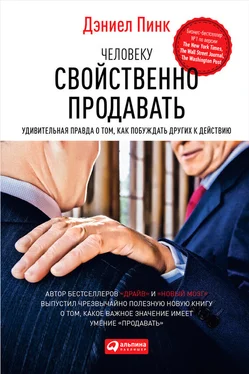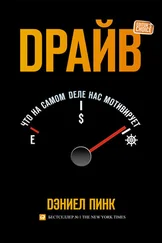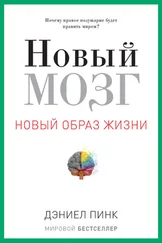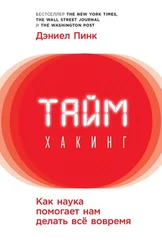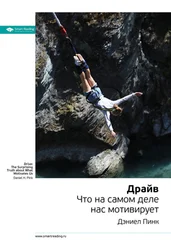Nate Boaz, John Murnane, and Kevin Nuffer, “The Basics of Business-to-Business Sales Success,” McKinsey Quarterly (May 2010).
Cain, Quiet: The Power of Introverts , 166.
Deniz S. Ones and Stephan Dilchert, “How Special Are Executives? How Special Should Executive Selection Be? Observations and Recommendations,” Industrial and Organizational Psychology 2, no. 2 (June 2009): 163–70.
Og Mandino, The Greatest Salesman in the World (New York: Bantam, 1968), 71, 87.
Napoleon Hill, How to Sell Your Way Through Life (Hoboken, NJ: Wiley, 2010), 49.
Ibrahim Senay, Dolores Albarracín, and Kenji Noguchi, “Motivating Goal-Directed Behavior Through Introspective Self-Talk: The Role of the Interrogative Form of Simple Future Tense,” Psychological Science 21, no. 4 (April 2010): 499–504.
Ibid., 500–501.
Ibid., 500.
См., в частности, работы Эдварда Диси и Ричарда Райана, напр. Edward L. Deci and Richard M. Ryan, “The ‘What’ and ‘Why’ of Goal Pursuits: Human Needs and the Self-Determination of Behavior,” Psychological Inquiry 11, no. 4 (October 2000): 227–68. Я описываю часть этого исследования в своей книге: Daniel H. Pink, Drive: The Surprising Truth About What Motivates Us (New York: Riverhead Books, 2009).
Shirli Kopelman, Ashleigh Shelby Rosette, and Leigh Thompson, “The Three Faces of Eve: Strategic Displays of Positive, Negative, and Neutral Emotions in Negotiations,” Organizational Behavior and Human Decision Processes 99, no. 1 (January 2006): 81–101.
Ibid.
Barbara L. Fredrickson, Positivity: Top-Notch Research Reveals the 3 to 1 Ratio That Will Change Your Life (New York: Three Rivers Press, 2009), 21.
Barbara L. Fredrickson and Marcial F. Losada, “Positive Affect and the Complex Dynamics of Human Flourishing,” American Psychologist 60, no. 7 (October 2005): 678–86.
Cory R. Scherer and Brad J. Sagarin, “Indecent Influence: The Positive Effects of Obscenity on Persuasion,” Social Influence 1, no. 2 (June 2006): 138–46.
См., напр., Marcial Losada and Emily Heaphy, “The Role of Positivity and Connectivity in the Performance of Business Teams: A Nonlinear Dynamics Model,” American Behavioral Scientist 47, no. 6 (February 2004): 740–65.
Fredrickson and Losada, “Positive Affect.”
Ibid., 685.
Fredrickson, Positivity , 137.
Martin E. P. Seligman and Peter Schulman, “Explanatory Style as a Predictor of Productivity and Quitting Among Life Insurance Sales Agents,” Journal of Personality and Social Psychology 50, no. 4 (April 1986): 832–38.
Martin E. P. Seligman, Learned Optimism: How to Change Your Mind and Your Life (New York: Vintage Books, 2006), 7, 8.
Seligman and Schulman, “Explanatory Style,” 834–35.
Ibid., 835.
Seligman, Learned Optimism , 292.
Alicia H. Munnell, Anthony Webb, Luke Delorme, and Francesca Golub-Saas, “National Retirement Risk Index: How Much Longer Do We Need to Work?” Center for Retirement Research Report, no. 12–12 (June 2012); Teresa Ghilarducci, “Our Ridiculous Approach to Retirement,” New York Times , July 21, 2012.
См., напр., Shane Frederick, Nathan Novemsky, Jing Wang, Ravi Rhar, and Stephen Nowlis, “Opportunity Cost Neglect,” Journal of Consumer Research 36 (2009): 553–61.
Hal E. Hershield, Daniel G. Goldstein, William F. Sharpe, Jesse Fox, Leo Yeykelis, Laura L. Carstensen, and Jeremy N. Bailenson, “Increasing Saving Behavior Through Age-Processed Renderings of the Future Self,” Journal of Marketing Research 48 (2011): S23–S37.
Hershfield et al., “Increasing Saving Behavior.”
Ibid., citing Hal Erner-Hershfield, M. Tess Garton, Kacey Ballard, Gregory R. Samanez-Larken, and Brian Knutson, “Don’t Stop Thinking About Tomorrow: Individual Differences in Future-Self Continuity Account for Saving,” Judgment and Decision Making 4 (2009): 280–86.
Hershfield et al., “Increasing Saving Behavior.”
Jacob Getzels and Mihaly Csikszentmihalyi, The Creative Vision: A Longitudinal Study of Problem Finding in Art (New York: Wiley, 1976); Mihaly Csikszentmihalyi and Jacob Getzels, “Creativity and Problem Finding,” in Frank H. Farley and Ronald W. Neperud, eds., The Foundations of Aesthetics, Art, and Art Education (New York: Praeger, 1988). Цит. по: Mihaly Csikszentmihalyi, Flow: The Psychology of Optimal Experience (New York: Harper Perennial, 1981), 277.
J. W. Getzels, “Problem Finding: A Theoretical Note,” Cognitive Science 3 (1979): 167–72.
См., напр., Herbert A. Simon, “Creativity and Motivation: A Response to Csikszentmihalyi,” New Ideas in Psychology 6 (1989): 177–81; Stéphanie Z. Dudek and Rémi Cote, “Problem Finding Revisited,” in Mark A. Runco, ed., Problem Finding, Problem Solving, and Creativity (Norwood, NJ: Ablex, 1994).
The Conference Board, Ready to Innovate: Are Educators and Executives Aligned on the Creative Readiness of the U. S. Workforce? Research Report R-1424–08-RR (October 2008), доступно на http://www.artsusa.org/pdf/information_services/research/policy_roundtable/readytoinnovatefull.pdf
Robert B. Cialdini, Influence: Science and Practice , 5th ed. (Boston: Allyn & Bacon, 2009), 12–16.
В качестве хорошего введения в тему см.: Daniel Kahneman and Amos Tversky, “The Framing of Decisions and the Psychology of Choice,” Science 211 (1981): 453–58; Daniel Kahneman and Amos Tversky, “Rational Choice and the Framing of Decisions,” in Robin M. Hogarth and Melvin W. Reder, eds., Rational Choice: The Contrast Between Economics and Psychology (Chicago: University of Chicago Press, 1987); Erving Goffman, Frame Analysis: An Essay on the Organization of Experience (Cambridge MA: Harvard University Press, 1974).
Sheena S. Iyengar and Mark R. Lepper, “When Choice Is Demotivating: Can One Desire Too Much of a Good Thing?” Journal of Personality and Social Psychology 79 (2000): 995–1006.
Aaron R. Brough and Alexander Chernev, “When Opposites Detract: Categorical Reasoning and Subtractive Valuations of Product Combinations,” Journal of Consumer Research 39 (August 2012): 1–16, 13.
Читать дальше
Конец ознакомительного отрывка
Купить книгу
